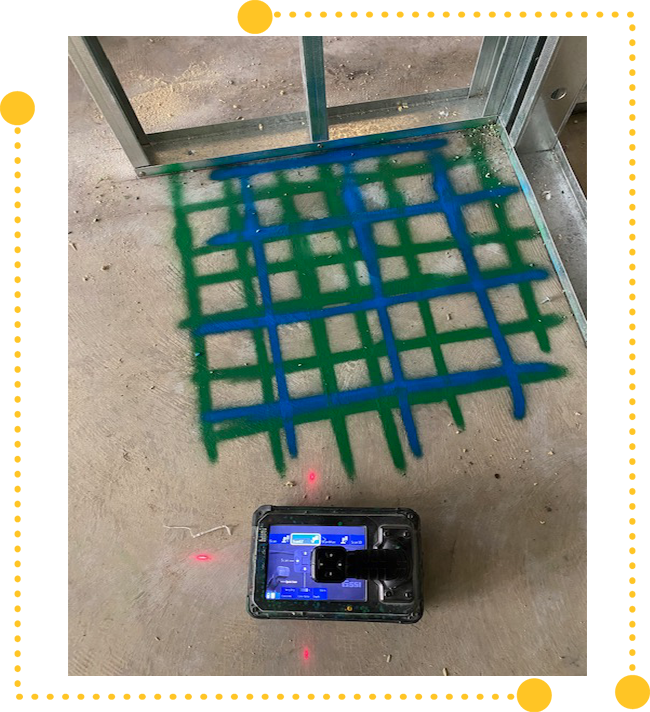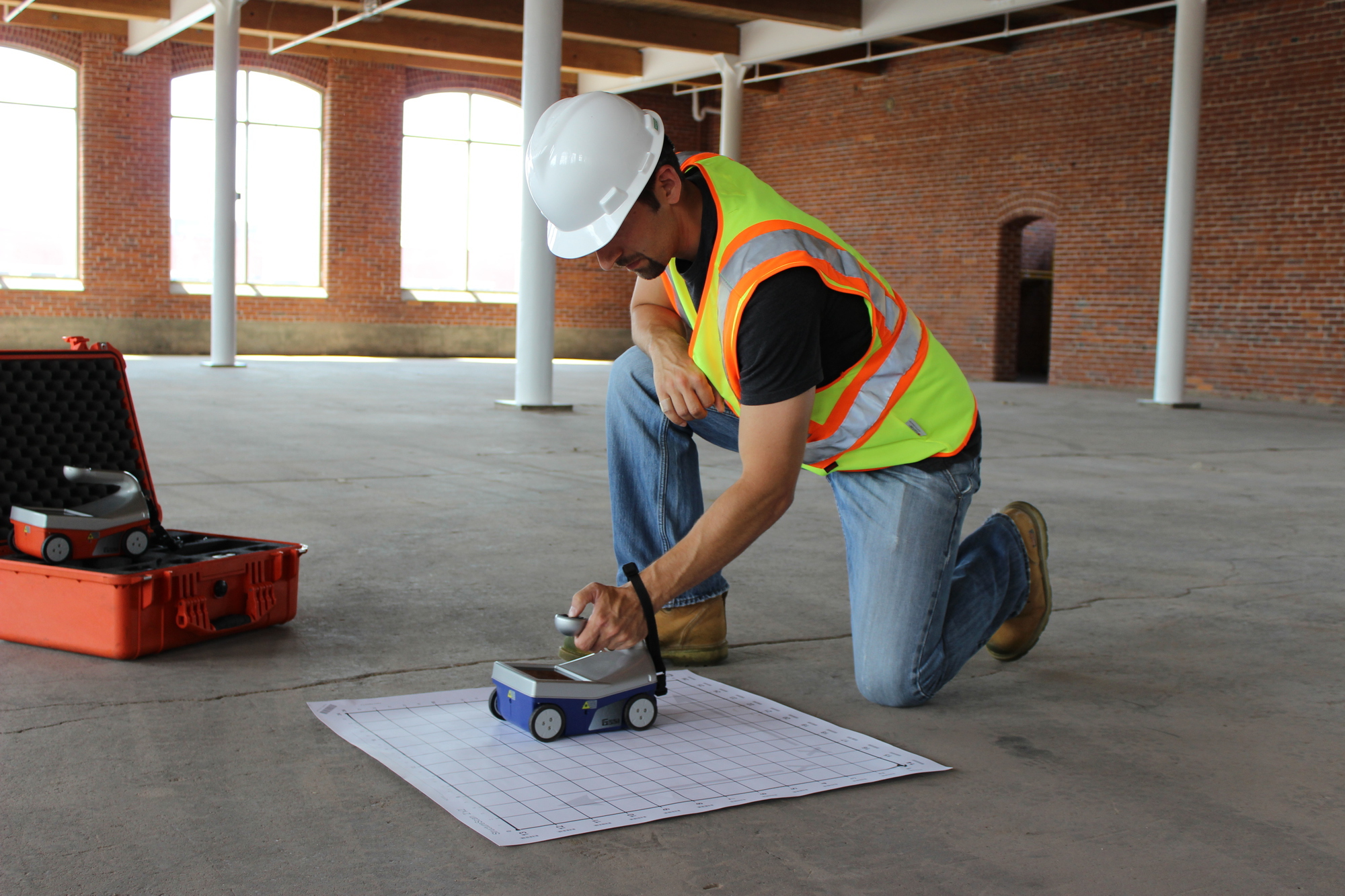RainierGPR Concrete Scanning: Accuracy and Security for Construction Tasks
RainierGPR Concrete Scanning: Accuracy and Security for Construction Tasks
Blog Article
Making The Most Of Efficiency and Minimizing Risks: The Duty of Concrete Scanning in Construction
In the world of construction, where accuracy and safety and security are vital, the application of concrete scanning innovation has actually ended up being a vital tool for job supervisors and designers alike. By utilizing innovative scanning techniques, building and construction groups can navigate complex settings with increased performance while minimizing possible risks that could jeopardize both spending plans and timelines. The elaborate dancing between maximizing effectiveness and decreasing risks in building depend upon the capacity to peer beneath the surface area, disclosing a world of covert challenges and opportunities. The role of concrete scanning in this delicate equilibrium is not just supportive however transformative, providing a glance into a future where expensive blunders are preempted, safety is prioritized, and quality is non-negotiable.

Importance of Concrete Scanning
Concrete scanning plays a critical duty in making certain the structural integrity and safety and security of construction projects by precisely identifying embedded objects and possible risks within concrete frameworks. By using various scanning innovations such as ground-penetrating radar (GPR) and electromagnetic induction, construction teams can identify rebar, post-tension cords, avenues, and other covert barriers prior to drilling, reducing, or coring into concrete. This proactive technique helps avoid expensive problems, injuries, and task hold-ups that might develop from mistakenly striking these things during building tasks.
Additionally, concrete scanning aids in compliance with security laws and quality standards by giving accurate info concerning the condition of concrete frameworks. It allows job supervisors and engineers to make enlightened choices concerning architectural alterations, repair services, or reinforcements based upon reputable information gotten via scanning procedures. Additionally, the precise mapping of embedded objects guarantees the efficient implementation of building and construction plans, minimizing the threat of mistakes and ensuring the long life and toughness of the developed environment. Eventually, purchasing concrete scanning services adds to the general success and security of construction tasks.

Advanced Technology in Building
Given the boosting demand for precision and effectiveness in building and construction methods, the combination of advanced technology has come to be critical in enhancing job results and ensuring optimum security procedures - RainierGPR Concrete Scanning. One significant development is Building Information Modeling (BIM), an electronic depiction of a building's functional and physical qualities. BIM enables far better cooperation amongst stakeholders, enhanced visualization of the job, and boosted decision-making throughout the construction process. Additionally, using drones in building and construction has reinvented website surveys, progress monitoring, and examinations. Drones supply real-time information, boost safety by lowering the need for workers to accessibility high-risk locations, and boost general task tracking. Additionally, the application of Enhanced Truth (AR) and Online Fact (VR) innovations in construction design and drawing board enables stakeholders to visualize the final item, recognize possible issues, and make needed changes before building starts. These innovations improve processes, minimize errors, and eventually add to much more effective and much safer building and construction practices.

Advantages of Things Mapping
The application of things mapping innovation in building and construction jobs provides a plethora of advantages that improve job planning and execution. One of the crucial advantages of object mapping is its ability to provide thorough and precise info concerning the place of underground energies, structural aspects, and various other things within the building and construction website. This information is vital for ensuring that excavation and boring activities are executed securely and efficiently, minimizing the threat of damage to existing infrastructure.
Furthermore, object mapping technology makes it possible for building and construction teams to produce exact 3D designs of the site, enabling for much better visualization of the project and enhanced control among different trades - RainierGPR Concrete Scanning. This enhanced spatial recognition assists to recognize prospective clashes and problems early in the planning stages, minimizing the demand for expensive rework and hold-ups throughout building and construction
In addition, things mapping can also simplify the documentation process by giving electronic records of the site in the past, throughout, and after construction. These documents work as useful referrals for future upkeep and remodelling jobs, inevitably boosting the long-lasting efficiency and sustainability of the built atmosphere.
Preventing Costly Mistakes
Object mapping technology's role in building expands past enhancing project preparation and implementation to incorporate a see it here critical element: preventing costly errors. By utilizing innovative concrete scanning techniques, construction groups can determine possible threats such as rebar blockage, post-tension wires, or spaces within concrete frameworks. Overall, the proactive use of concrete scanning innovations in building jobs substantially decreases the risk of mistakes and eventually adds to cost financial savings and job effectiveness.
Ensuring Safety and Top Quality
To promote the greatest criteria of safety and security and top quality in construction tasks, the application of concrete scanning innovation plays a critical duty. By making use of sophisticated scanning techniques such as ground-penetrating radar (GPR) and electromagnetic induction, building groups can identify prospective dangers concealed within concrete frameworks before beginning any kind of job. This positive strategy not just minimizes the danger of mishaps on the construction site but also ensures the structural honesty of the structure.
Concrete scanning likewise aids in validating the placement of rebar, avenues, and post-tension cords, guaranteeing that these components are properly placed based on the layout specifications. This precision in locating crucial components assists protect against mistakes during the building and construction procedure, ultimately leading to a better finished product. In addition, by recognizing any type of abnormalities or incongruities within the concrete very early on, needed changes can be made quickly, reducing the chance of rework and expensive hold-ups.
In essence, concrete scanning technology serves as an important device in securing both the security of building employees and the total high quality of the built environment. Its capacity to discover possible risks and guarantee adherence to layout standards makes it a vital possession in modern-day building and construction techniques.

Conclusion
In verdict, concrete scanning plays a critical duty in maximizing performance and reducing risks in building tasks. By making use of innovative technology for things mapping, possible expensive mistakes can be stopped, making certain safety and security and high quality of the final structure. It is crucial for building firms to focus on making use of concrete scanning to improve productivity, reduce threats, and deliver top notch cause their jobs.
Concrete scanning plays a vital duty in making sure the structural stability and security of building and construction jobs by precisely finding embedded things and possible dangers within concrete frameworks. The application of Augmented Reality (AR) and Digital Reality (VR) technologies in building and construction layout and planning phases makes it possible for stakeholders to imagine the final item, determine prospective issues, and make required modifications before building begins. By using sophisticated concrete scanning strategies, construction teams can identify prospective hazards such as rebar blockage, post-tension cables, or voids within concrete frameworks. In general, the proactive use of concrete scanning technologies in building and construction jobs substantially decreases the danger of mistakes and inevitably contributes to cost financial savings check out here and project efficiency.
To support the highest criteria of safety and quality in building projects, the implementation of concrete scanning modern technology plays an essential check out here duty.
Report this page